
Prep: 15 mins Bake: 15 to 18 mins Yield: 8 scones
Scones
8 tablespoons (113g) unsalted butter, cold, divided
1/2 cup (64g) Six-Grain Blend or old fashioned oats
1/2 cup (57g) Whole Wheat Flour
1 cup (106g) pumpernickel flour medium rye flour
1 tablespoon baking powder
3 tablespoons (35g) sugar
1/2 teaspoon salt
2 large eggs
1/3 cup (74g) milk (try reducing to 1/4 cup)
Glaze:
2 tablespoons (28g) unsalted butter, browned
3/4 cup (85g) confectioners' sugar
1/4 teaspoon vanilla-butternut flavor or 1/2 teaspoon vanilla extract
1 to 2 tablespoons (14 to 28g) milk
Turn the dough out onto a floured surface and pat it into an 8" disk. Cut into 8 wedges and place on the baking sheet.
Bake the scones for 15 to 18 minutes, until golden. Cool slightly before glazing.
To make the glaze:
Store any leftover scones well-wrapped, at room temperature, for several days. Freeze for longer storage.
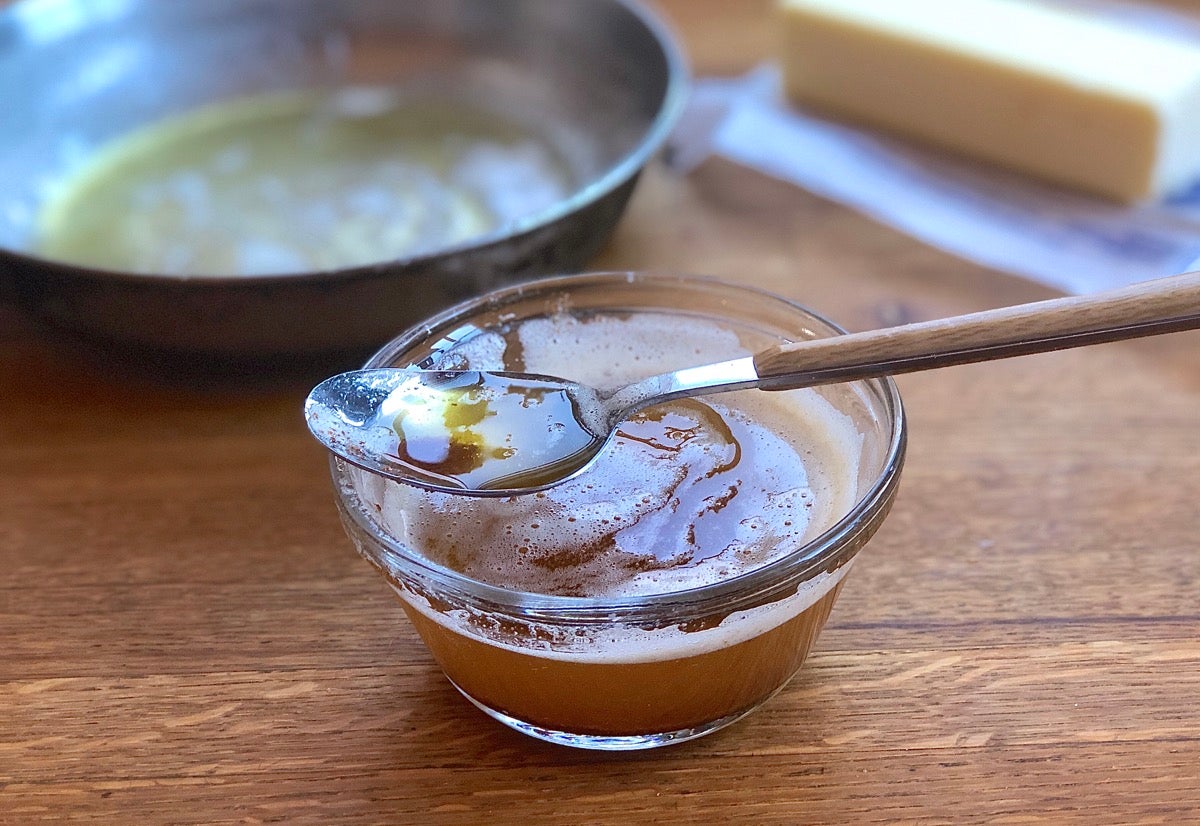
How does regular butter become brown butter?
Brown butter is butter that’s heated until its water evaporates and its milk proteins and sugars (specifically, lactose) turn brown. This process is an example of the Maillard reaction, a chemical interaction between amino acids and sugar that results in darkened color and the production of a variety of flavor compounds. The Maillard reaction is responsible for the “toasty” flavor in a slice of breakfast toast, the delicious crispy edges of a chocolate chip cookie, and the rich flavor of a golden-brown croissant.
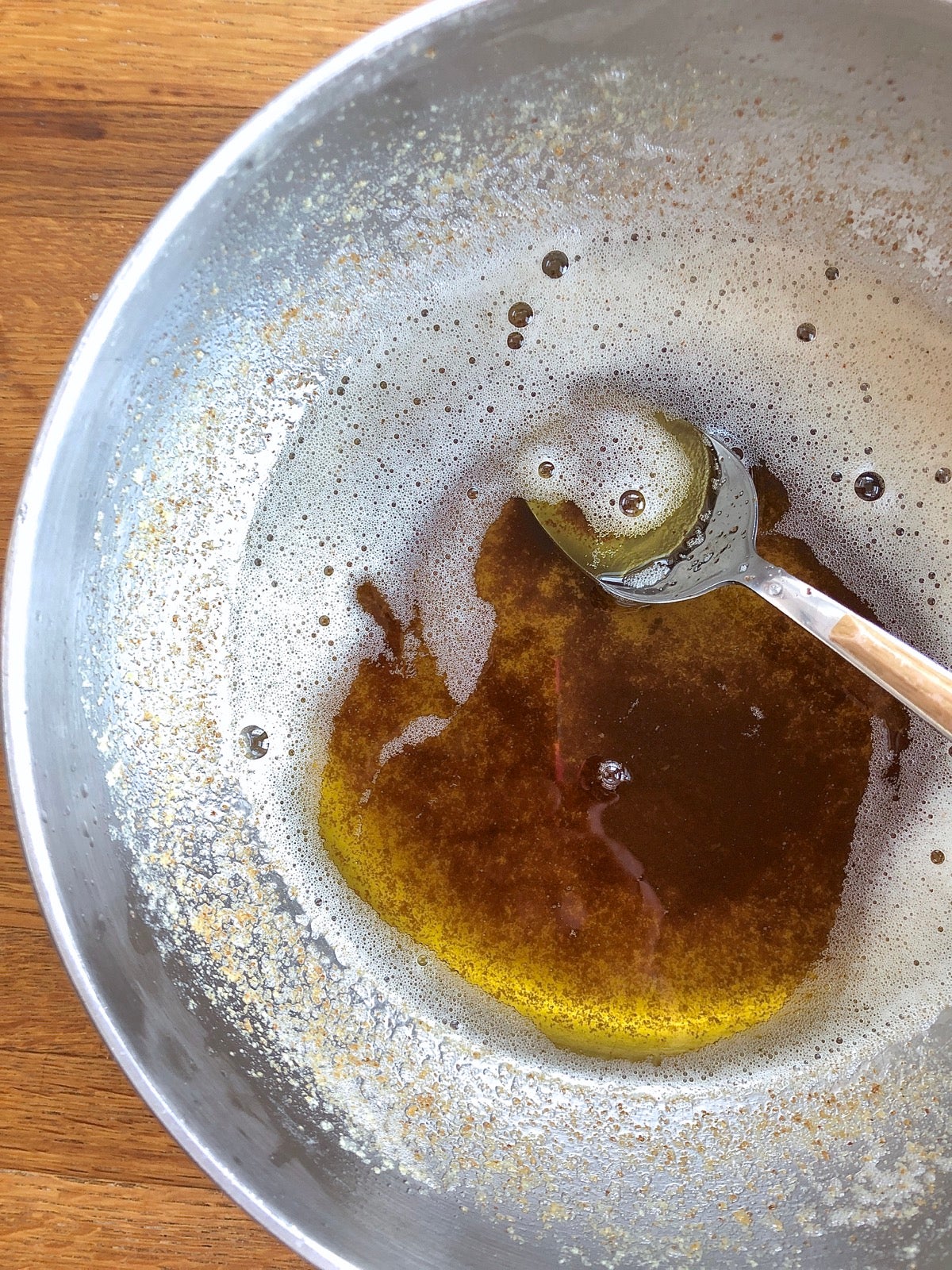
When butter is melted and then simmered, it gradually separates into two parts: its inherent fat, and its milk solids, which drop to the bottom of the pan. The fat darkens somewhat, but the silty looking milk solids brown significantly, moving from light mahogany to almost black as the butter simmers.
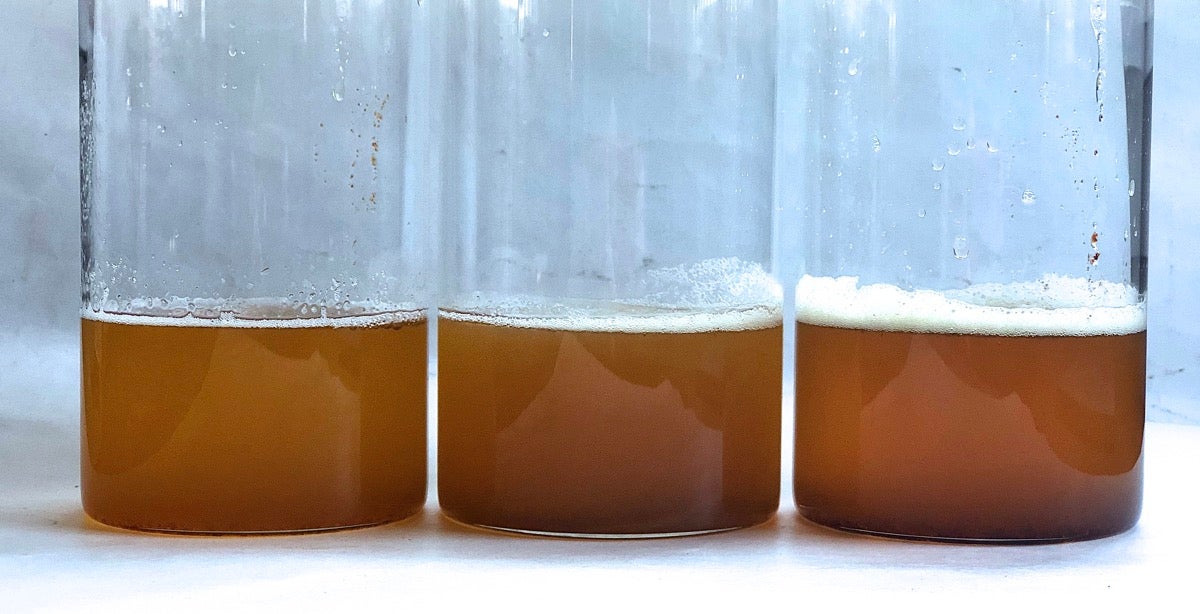
Brown butter’s flavor reflects the color of its milk solids: very light solids give the butter mild flavor; dark solids, a much richer, “toastier” experience.
For comparison's sake think of maple syrup, whose grades range from light amber to dark/robust: the darker the syrup, the more maple-y it tastes. Thus with brown butter: the darker it is, the stronger its butter flavor. (Stop short of letting that sediment turn black, though: blackened butter is bitter.)
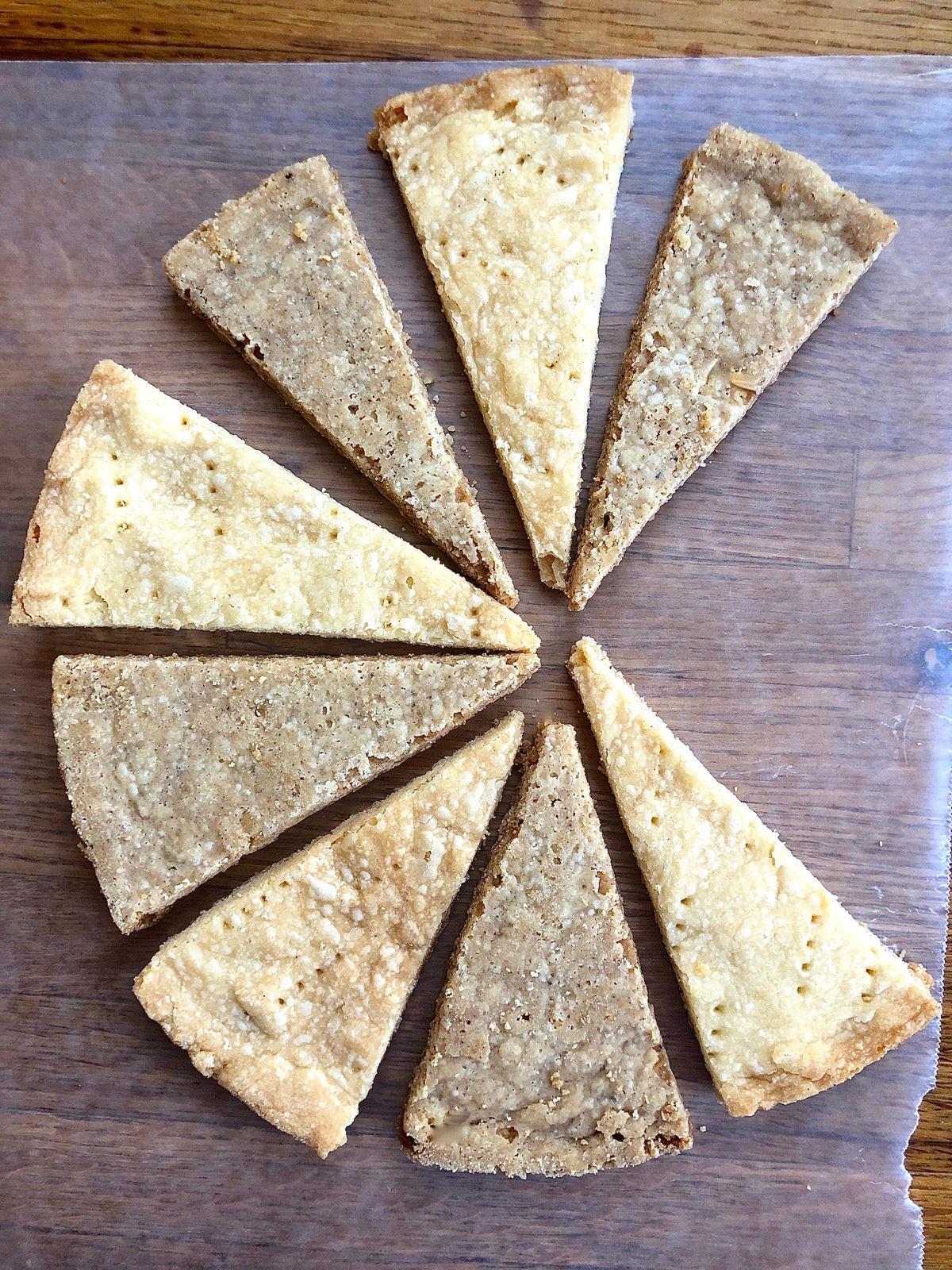
What can I bake with brown butter?
Use brown butter just about everywhere you’d use regular butter, including in cookies and cake, biscuits and pie crust, scones and muffins and pastry. It's also superb in icings and frostings: try it in our favorite Italian Buttercream, or Soft Cookie Frosting.
A couple of caveats: Brown butter may darken the color of lighter baked treats like sugar cookies and yellow cake. Also, brown butter's dark flecks may be visible. Just think of them as you would vanilla bean specks: indicative of wonderful flavor.
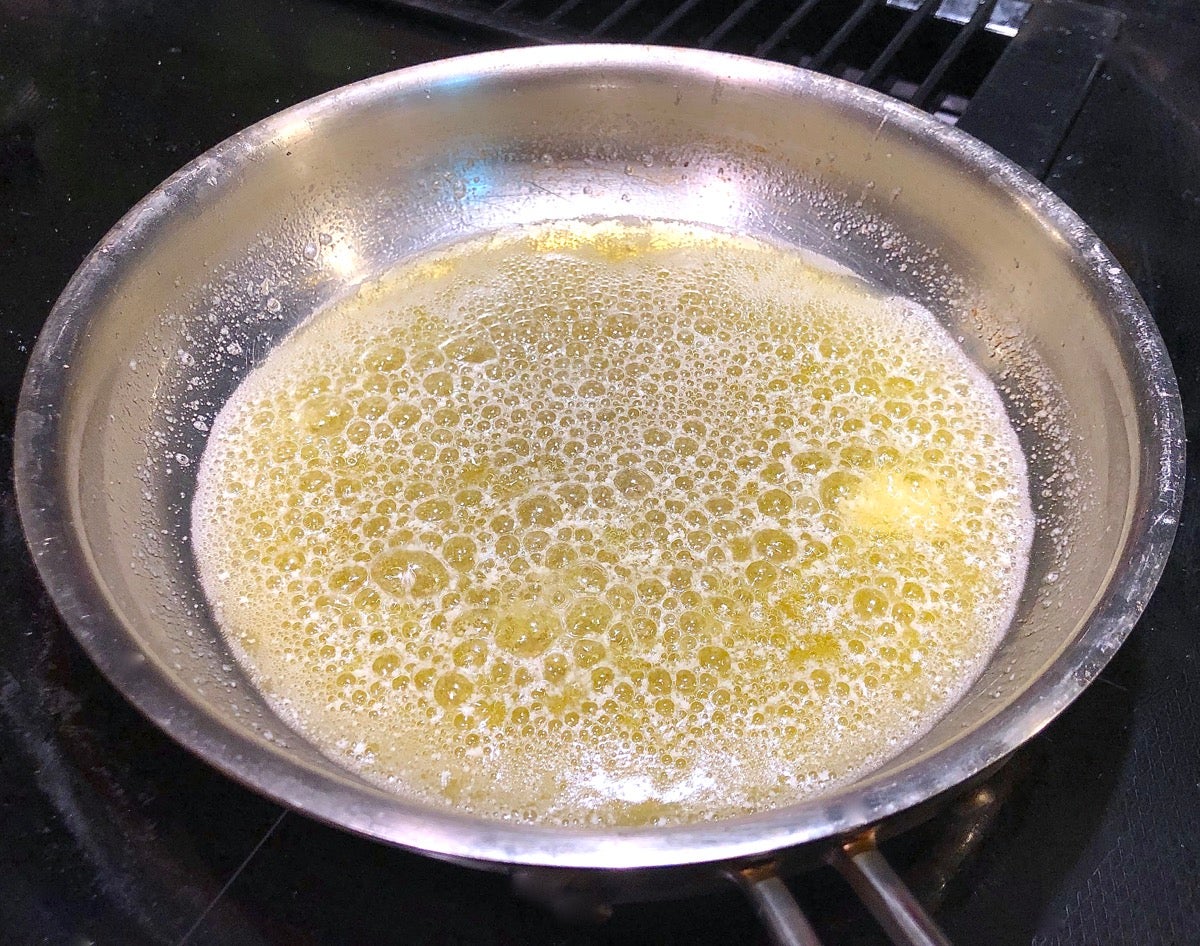
How to make brown butter
This is a really easy process — but it’s not foolproof. You either pay attention, or pay the price: burned, bitter butter. Still, 10 to 12 minutes at the stove isn’t onerous, and brown butter is certainly worth the effort.
I typically use 8 ounces (227g, 16 tablespoons, two sticks) of unsalted butter. Why unsalted? Salted butter runs the risk of becoming too salty as the butter’s liquid evaporates. Salted butter also tends to foam more as it melts, making it difficult to see the butter underneath changing color.
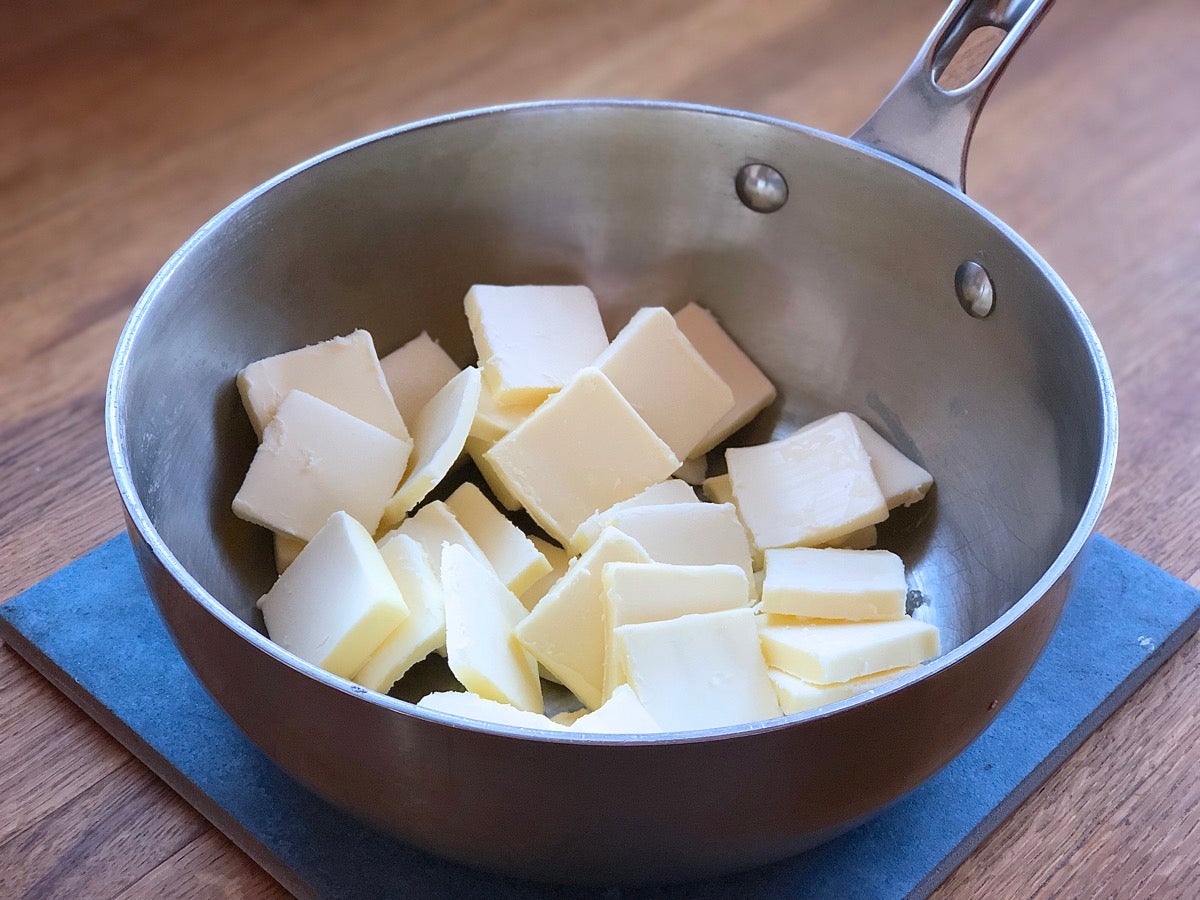
First, choose a light-colored pan. This will allow you to easily track the butter’s progress from amber to dark gold to chestnut brown.
Cut butter into uniform pieces so it heats evenly. While it’s tempting to just throw a couple of sticks of butter into the saucepan and forget about it, take the time to cut the butter into pats. This will ensure the butter melts evenly, a key to making brown butter that’s neither undercooked nor burned.
Place the pan on a burner set to medium heat. You’re looking for a very even heating experience. Using medium heat is a good compromise between high heat (too much risk of burning) and low (too slow)
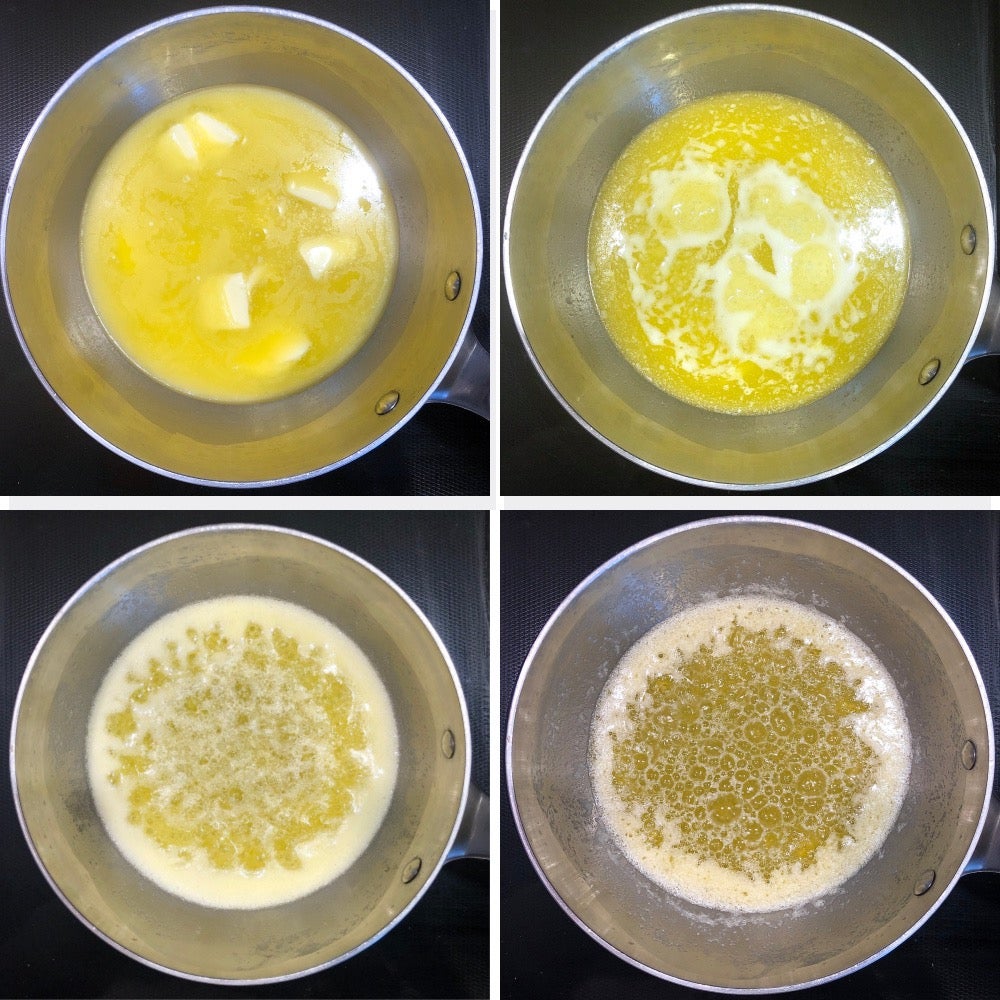
The butter gradually melts (photo at top left), then starts to sputter and pop as its water evaporates (top right). Foam collects on top as the butter continues to simmer (bottom left). The bubbles eventually become larger, pushing the foam to the sides of the pan and giving you a better view of the darkening milk solids underneath (bottom right).
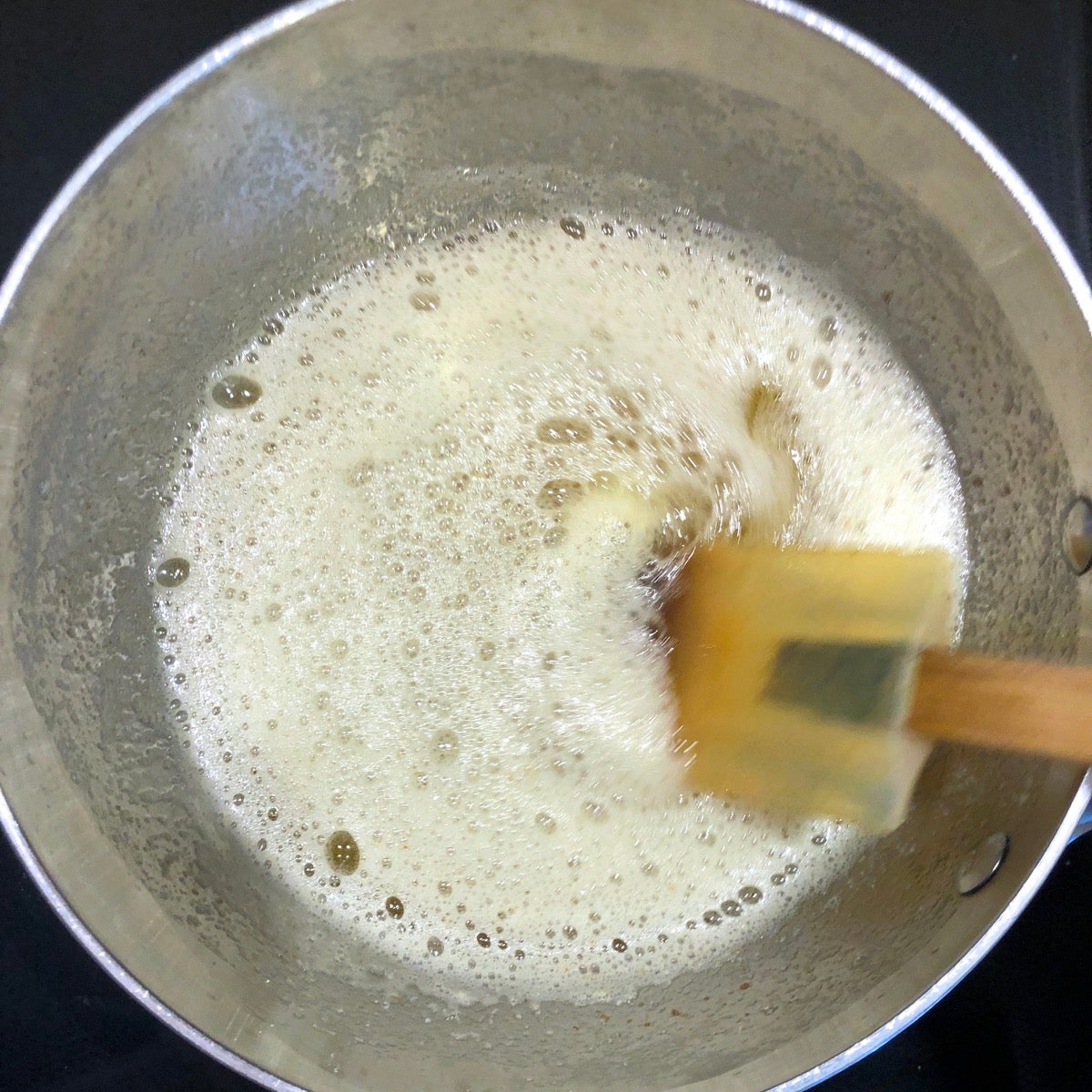
Once the butter has stopped popping and sputtering and started foaming, swirl the pan to help clear the foam to the sides, and stir up the dark bits at the bottom with a heatproof spatula. Swirling and stirring keep the bits from burning.
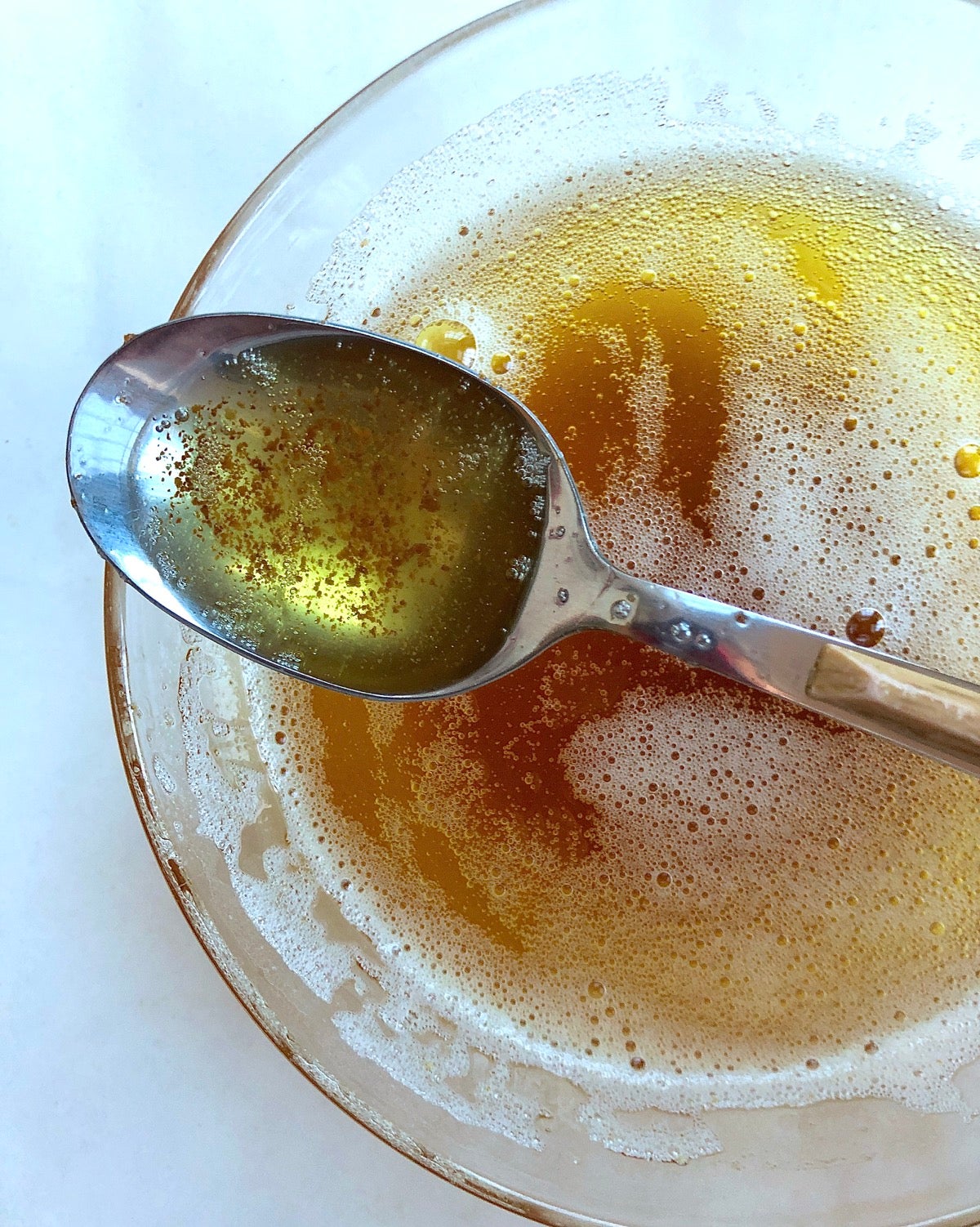
When the butter has browned to your liking, remove the pan from the heat. You may prefer the mild flavor of barely browned butter, or the more intense taste of butter with a generous amount of deep brown milk solids; it's up to you.
In France, brown butter is called beurre noisette: hazelnut butter, referring to the preferred color of the browned solids. For added flavor leave the pan on the heat beyond this point, long enough to yield solids that are a really deep mahogany brown.
Once the butter is as brown as you like, speed is imperative: immediately remove the pan from the heat and pour the butter into a heatproof container, to stop it cooking any further.
If your recipe calls for melted butter, you can use brown butter immediately. But if your recipe calls for softened, room temperature, or cold butter, you’ll need to refrigerate it first.
Brown butter becomes rock hard in the refrigerator, making it appropriate for recipes that need cold butter to be “worked” into flour (think biscuits and pie crust).
For recipes calling for room-temperature butter, remove brown butter from the fridge an hour or so ahead of time, just as you would regular butter. For softened butter, give room-temperature butter a few quick stirs; it should loosen up nicely.
Brown butter keeps well for several weeks in the refrigerator; store it airtight. A glass jar is your best bet.
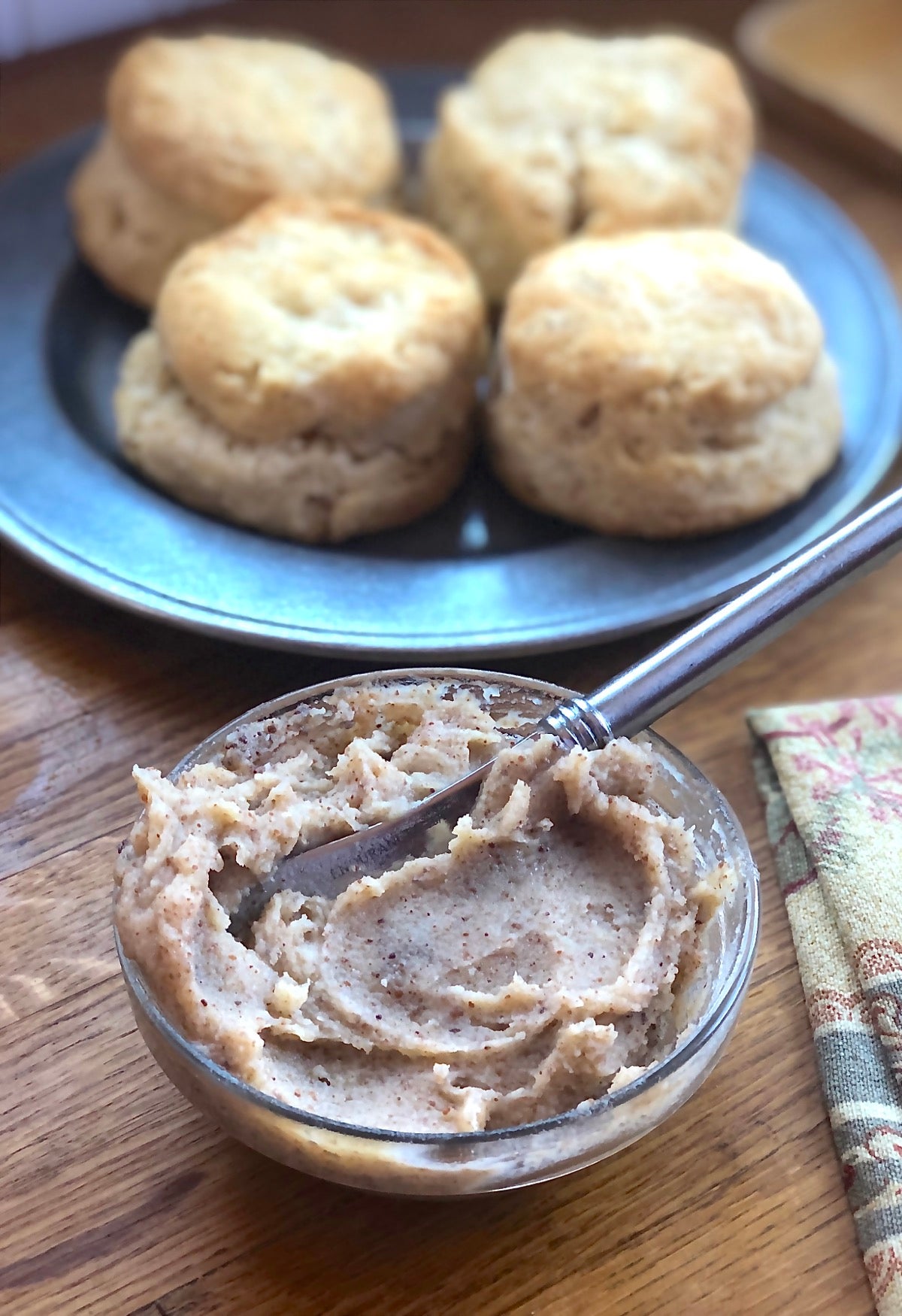
Brown butter tips
Adjust the liquid in your recipe if necessary. Since butter is 15% water, you need to adjust your recipe to make up for the liquid that evaporated from the butter during the simmering process. Add 1 tablespoon (14g) water (or other liquid) for every 1/2 cup (8 tablespoons, 113g) of butter used. Failing to add this extra liquid may yield a somewhat greasy final result, especially in something like chocolate chip cookies.
For the biggest bang, use brown butter in butter-forward baked goods. While brown butter will make everything taste better, the difference in flavor is more apparent in baked treats that use a lot of butter and don’t offer a lot of competing flavors. Plain cookies (shortbread, sugar cookies), pie crust, puff shells (choux paste), flaky pastry, and biscuits are good examples.
Brown butter's not just for baking. Drizzle melted brown butter onto cooked vegetables or fish, or use room-temperature brown butter as a spread on toast, pancakes, scones, muffins, or biscuits. It's also wonderful, as you'd expect, on popcorn.
Store any leftover scones well-wrapped, at room temperature, for several days. Freeze for longer storage.








No comments:
Post a Comment